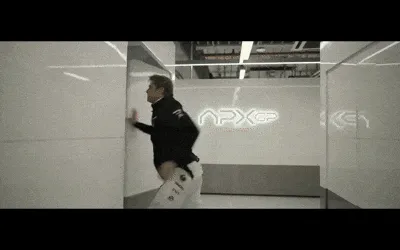Hunt vs Lauda: F1's Greatest Racing Rivals

Plot
In the early 1970s, the world of Formula 1 racing was on the cusp of a transformation, with two drivers at the epicenter of this transformation - James Hunt, a British Formula 1 driver, and Niki Lauda, an Austrian racing prodigy. Theirs was a rivalry that would span the world of racing, pushing each other to new heights, and leaving an indelible mark on the history of the sport. At the beginning of the decade, James Hunt was starting to emerge as a force to be reckoned with in the racing world. With his daredevil spirit, flamboyant personality, and a penchant for getting under the skin of his fellow competitors, Hunt had quickly become a fan favorite. He had won several national and international races, but the big prize had eluded him - a World Drivers' Championship title. On the other hand, Niki Lauda, was a scientist and engineer at heart, with a calculated and analytical approach to racing, which earned him the reputation of a racing genius of his time. His ability to think several steps ahead, coupled with an unmatchable speed, had made him a dominant force in the racing world. Lauda had also been a World Drivers' Champion, having won the title in 1975 in a thrilling contest with Ferrari's Ferrari teammate Clay Regazzoni. As the new season got underway in 1976, the rivalry between Hunt and Lauda had reached new heights. Hunt, driving for McLaren's rival team, March, had secured a seat at the iconic British team, and Lauda, with Ferrari, was the team to beat. The two drivers engaged in a fierce battle, each determined to outdo the other and claim the coveted title. Their rivalry was not only fueled by a desire to be the best, but also by vastly different driving styles. Hunt, the free spirit, relied on his instincts, his natural talent, and his uncanny ability to get the most out of his car. Lauda, on the other hand, was the calculating, methodical driver. He studied every detail, every inch of the track, and meticulously planned every single move. This contrast in driving styles made their rivalry all the more compelling, as each driver sought to prove that their approach was the superior one. On August 1, 1976, a turning point in the season arrived, when Lauda suffered an appalling crash at the German Grand Prix, at the infamous Nurburgring circuit. Lauda's car careened off the track and crashed through a concrete barrier, and he was left with severe burns and injuries. The medical team at the track took an astonishing 25 minutes to extricate him from the wreckage. Hunt was at the circuit that day, and he was shocked by the news of Lauda's accident. The German Grand Prix was one of the defining moments of the season, marking a shift in momentum in Lauda's fortunes. With his teammate, Clay Regazzoni, unable to challenge for the championship, Ferrari's title chances looked to be slipping away. Hunt, now in pole position, seemed destined to seize the championship. However, Lauda's miraculous comeback from the brink of death stunned everyone. After numerous surgeries and an unprecedented amount of rehabilitation, Lauda was back on the grid just six weeks after his life-threatening crash. He returned to racing in a new Ferrari, driven by the will to prove his doubters wrong and his resilience in the face of seemingly insurmountable odds. Lauda's remarkable return to racing raised questions about his motivations and what he could accomplish, given his physical limitations. Lauda pushed himself, despite the lingering effects of the injuries and the grueling schedule of the remaining races. As the season wore down, Lauda, fueled by an unyielding determination, began to close the gap with Hunt. The final showdown came at the Canadian Grand Prix, held at the infamous Montreal street circuit. Hunt and Lauda, still locked in a fierce battle for the championship, took to the starting grid on a sunny autumn day in June. The tension was palpable as the two drivers, who had faced off for much of the season, prepared to settle the title between them. The Canadian Grand Prix was one of the most memorable moments in the history of Formula 1 racing, showcasing the incredible skills and resilience of the two drivers. Hunt, leading from the start, seemed on course to seal the championship. However, Lauda's Ferrari caught fire after crashing into the barriers, but his quick thinking and the bravery of his co-driver allowed them to get back to their pits within seconds. The Ferrari team then performed an incredible repair job, managing to fix Lauda's car in time for him to return to the track. When Lauda returned to the track, he started from the back of the grid, with his team-mate Regazzoni who was now 0.5 seconds ahead of him. The entire track was on their feet as Lauda began a remarkable recovery, driving with a level of skill that astounded everyone in the paddock, the grandstands, and in front of the millions of TV viewers worldwide. Lauda's drive in the Canadian Grand Prix went down in history, not just because of its dramatic nature but also because it encapsulated the spirit of perseverance and determination, which Lauda embodied throughout his career. In a truly remarkable comeback, Lauda climbed up to 3rd place, ultimately securing 9 points to take the lead in the standings with one round to go.
Reviews
Recommendations




